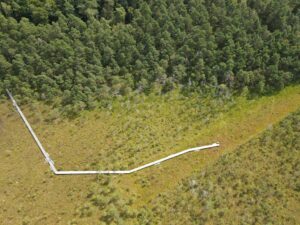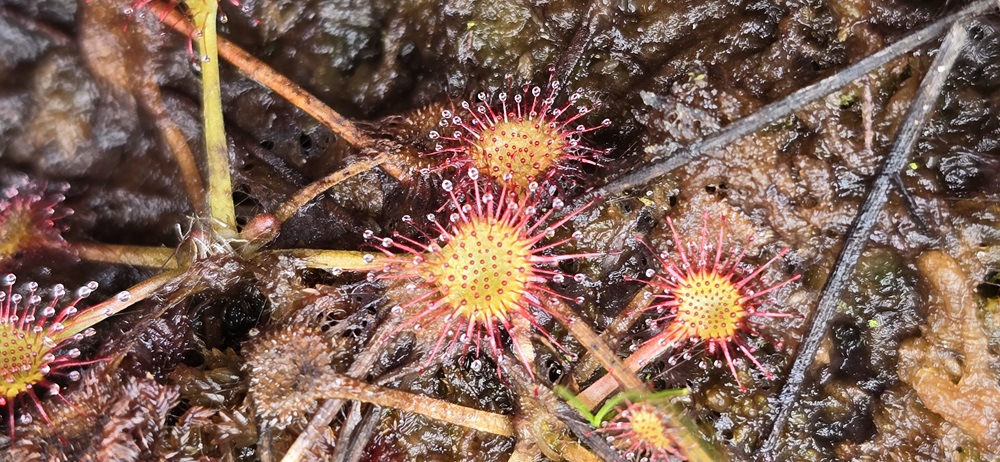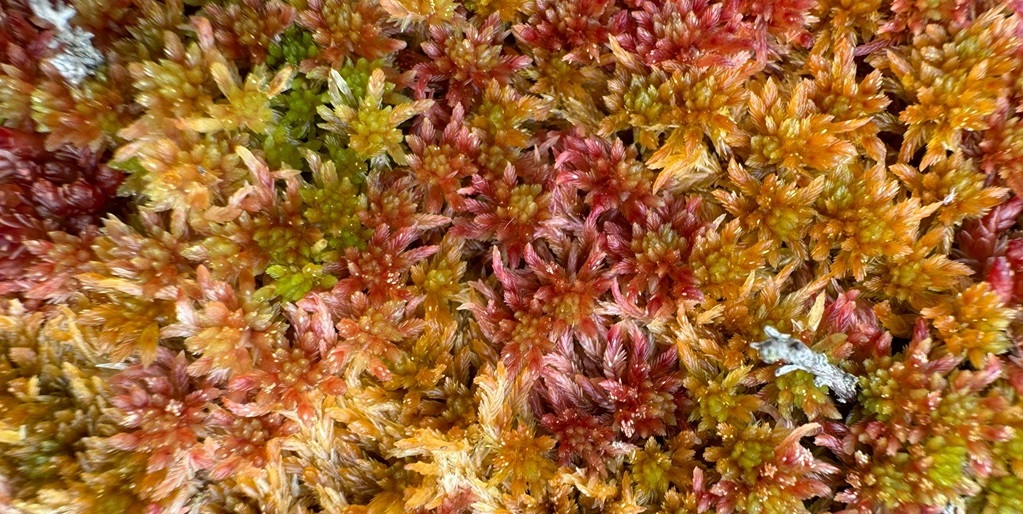KUSOWO PEATBOG

During the summer of 2024 (19 August), we went with Prof. Mariusz Lamentowicz to the research base of the ReVersal project in the nature reserve “Bagno Kusowo” – a peat bog reserve established in 2005.
It is probably the best preserved large dome-shaped peat bog of the Baltic type in Poland. Overgrown with peat mosses and bog forest, the peat layer reaches 12 meters thick. learn more
The reserve is located in the protected landscape area “Jeziora Szczecineckie”, Special Area of Protection (SAC) Natura 2000 “Jeziora Szczecineckie” (PLH 320009).
ReVersal– Restoring peatlands of the nemoral zone under conditions of varying water supply and quality. Project funded by National Science Centre of Poland (NCN) No. 2021/03/Y/ST10/00093 BiodivRestore (2022-2025). Project within the consortium led by Adam Mickiewicz University (PI Prof dr hab. Mariusz Lamentowicz). PULS contractors: Prof dr hab. Radosław Juszczak & Prof UPP dr hab. Bogdan Chojnicki
Peatlands are valuable ecosystems that affect the climate and are dependent on it. Although they occupy only 3% of the Earth’s land surface, they contain about 25% of the world’s carbon resources in the soil. Their ability to actively accumulate carbon makes them natural sinks of atmospheric carbon dioxide. As a result of drainage works, most of Europe’s peatlands have been drained, as a result of which peat decomposition has begun to outweigh its accumulation. In this way, peatlands have begun to release larger amounts of carbon dioxide into the atmosphere. The Paris Agreement assumes the rewetting of 500,000 km2 of transformed peatlands from around the world by 2050-2070. /M.lamentowicz/


THE OVERVIEW OF THE REVERSAL PROJECT
The REVERSAL project aims to develop a comprehensive, spatiotemporal indicator framework to measure the success of peatland restoration across sites impacted by drainage and extraction. This framework will be built by investigating several key areas:
- Biological and Biogeochemical Analysis: We will study CO₂ and CH₄ fluxes to understand carbon budgets, as well as the effects of water and nutrient availability.
- Biodiversity: The project will explore how biodiversity shifts along degradation and restoration paths, taking into account past, present, and future climatic and socio-economic factors.
- Uncertainty and Adaptive Management: We will evaluate uncertainties in restoration strategies and assess trade-offs between various restoration goals to guide adaptive management.
- Remote Sensing Models: Developing remote-sensing-based models will help assess peatland degradation over space and time, facilitating knowledge integration and transfer.
- Model Transferability: These models will be tested across different landscapes to ensure they provide cost-effective, reliable, and long-term monitoring solutions.
To fully grasp the complexities of biological and biophysical processes, we will extend our research beyond individual sites and scales, including studies in (semi-) natural reference sites. Our work will involve analyzing palaeoecological data, indicators of peat decomposition, biodiversity indices in vegetation and microbial communities, and carbon and greenhouse gas estimates.
Although significant progress has been made in peatland restoration research, the REVERSAL project adopts a cross-disciplinary approach by integrating paleoecology, community ecology, hydrology, biogeochemistry, and remote sensing. This will create innovative tools for understanding the key drivers of successful restoration, especially in the nemoral zone, where peatlands face intense anthropogenic pressures such as nitrogen pollution, temperature rises, and changing water conditions. The project’s unique multidisciplinary and international focus addresses critical gaps in peatland restoration efforts under global climate change.







